


Periodontal disease, also known as gum disease, is one of the most common oral health problems. But more than that, it’s one of the most common health problems overall. The Centers for Disease Control and Prevention estimate that half of all Canadians over 30 struggle with a mild form of gum disease. That means there are millions and millions of adults who aren’t enjoying the good health they could be enjoying.
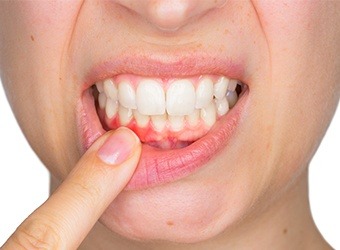
One reason that so many patients struggle with gum disease is that, in the very earliest stages of development, there aren’t always any noticeable symptoms. As the condition grows more advanced, though, symptoms will start to appear.
They include:
Patients with more advanced gum disease may even experience tooth loss as a result of their condition. Gum disease has also been linked with health problems elsewhere in the body. Those problems include heart disease, Alzheimer’s, stroke, diabetes, and pre-term birth in pregnant women.
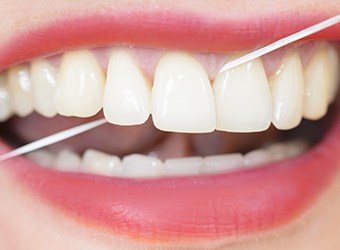
With the periodontal therapy you’ll receive from our Prince Albert dental office, you can enjoy better oral and overall health. During a consultation appointment, Dr. Wilson, will assess your needs and help you create a fully personalized treatment plan. If you have any questions about your plan, we would be happy to answer them.
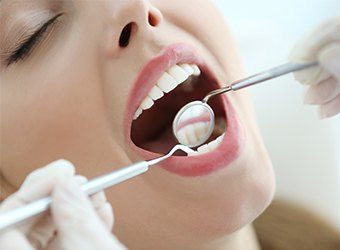
If you suspect you have gum disease, early intervention is crucial to protect your oral health. For mild cases like gingivitis, improving your brushing and flossing habits may be enough to reverse the condition. However, some cases of advanced gum disease requires professional treatment. That’s where scaling and root planing (also known as a deep dental cleaning) comes in! This non-surgical procedure targets the source of infection beneath the gumline and helps prevent further damage without the need for more invasive treatments. Read along to learn more.

While early-stage gum disease can often be managed at home with better oral hygiene, more advanced cases require professional intervention. You might need scaling and root planing if you experience any of the following:
If you notice any of these warning signs, it’s best to schedule a checkup right away. Treating gum disease early can save you from tooth loss and more extensive procedures in the future.
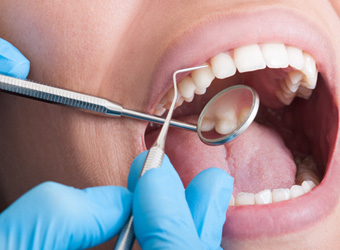
Scaling and root planing involve two key steps to stop gum disease from progressing:
Depending on the severity of your gum disease, the treatment may be done over multiple visits and may involve local anesthesia to keep you comfortable.

Following scaling and root planing, your gums may feel tender or sensitive for a few days. Here are some tips to help support healing and ease any discomfort:
Your dentist may also recommend a follow-up visit to monitor your healing and ensure the infection is under control. With proper aftercare and oral hygiene, scaling and root planing can significantly improve your gum health and help prevent future problems.

As gum disease advances, small pockets of bacteria form between the teeth and gums, and these can be very difficult to clean using regular instruments. In order to reach and eliminate this well-hidden bacteria, we can apply an antibiotic directly to the gums. It will slowly seep below the gum line over the course of a few days in order to thoroughly clean even the tiniest areas of the mouth.
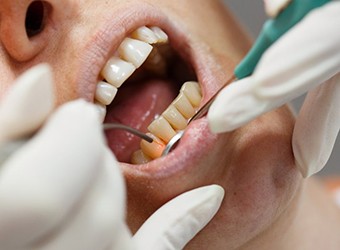
For greater precision and comfort, our team can provide laser periodontal treatment to improve your gum line and oral health. This procedure utilizes a soft tissue laser that’s designed to help eliminate bacteria as well as remove severely compromised gum tissue so that you can get back on track with a healthy smile. Due to the advanced technology, you can typically expect a faster and more comfortable recovery.
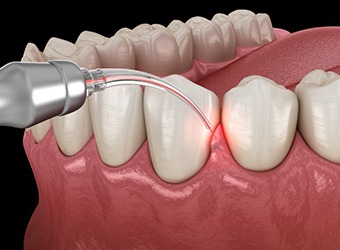
In many cases, laser periodontal treatment is generally performed alongside scaling and root planing. During the process, our team will use a Sirona soft tissue laser as an alternative to a scalpel to take out any diseased or infected tissue that we can’t salvage. Due to the accuracy of the laser, your dentist can remove compromised tissue while also preserving as much healthy gum as possible.
After getting rid of the diseased tissue, our team can continue with scaling and root planing to remove any other harmful bacteria while giving your gums the chance to reattach to your tooth roots more effectively.

With laser periodontal treatment, you can expect to appreciate a wide range of advantages, including:

While your recovery after your procedure should be rather quick, you might still expect your gums and mouth to feel some mild soreness for a week or more, whereas traditional gum surgeries tend to have a recovery time of two to four weeks. To help make your healing period as smooth as possible, make sure to implement the following tips:
I Need a Checkup & Cleaning I Need a Dentist for My Child I Have a Cavity or Broken Tooth I am Unhappy with My Smile I Want a Straighter Smile I am in Pain/Had an Accident I am Missing One or More Teeth I am Anxious/Afraid of the Dentist I Want to Learn About Sleep Apnea View Our Services